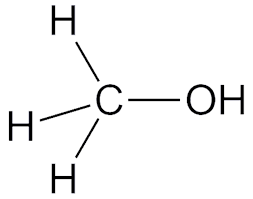Figure 1: Recalled product of sunscreen, manufactured by Banana Boat, for containing benzene.
Beach lovers will have to check twice before applying their average sunscreen. Two major news outlets have reported on the recall of Banana Boat sunscreen products due to concerns about the presence of benzene, a known carcinogen. The recall was first announced in late January, but has since been expanded to include more products and additional lot numbers. "While benzene is not an ingredient in any Banana Boat products, the review showed that unexpected levels of benzene came from the propellant that sprays the product out of the can," the company said in their announcement. Benzene is a colorless, flammable liquid that is widely used in the production of plastics, synthetic fibers, and rubber. It is also used as a solvent for many chemicals and as a component in gasoline. However, exposure to high levels of benzene can lead to cancer and other serious health problems.
According to the Fox Business article, the original recall included four Banana Boat sunscreen sprays: Ultra Sport, Sport, and Kids SPF 50, as well as Mineral SPF 30. The products were pulled from shelves and consumers were advised to stop using them immediately. However, on February 16th, the recall was expanded to include additional products, including Ultra Defense SPF 30, Ultra Defense SPF 50, and Protective Dry Oil SPF 15, as well as additional lot numbers for the previously recalled products. Once more, benzene was not an ingredient in any of the products, but rather was detected during routine testing.

Figure 2: Chemical structure of benzene (C6H6).
The Insider article provides more detail about the potential health risks associated with benzene exposure. It can cause bone marrow not to produce enough red blood cells, which can lead to anemia. Also, it can damage the immune system by changing blood levels of antibodies and causing the loss of white blood cells. If those are not severe enough it carries a high risk of cancer, specifically leukemia. It is often found in industrial settings, but can also be present in consumer products such as sunscreen. The levels of benzene found in the Banana Boat products are relatively low, but are still above the acceptable limit set by the FDA. Additionally, this article provides guidelines for consumers who may have come in contact with benzene, including seeking medical attention if they experience any symptoms or concerns.
Not only are humans exposed to benzene in both indoor and outdoor air, tobacco smoke, and gasoline; but this case of benzene found in personal care products has been familiar around multiple industries. In particular, it has been found in various sunscreens, spray deodorants, antiperspirants, and dry shampoos. Valisure, a pharmaceutical testing company, urged the FDA to recall 40 batches of sunscreen containing benzene in 2021, and also found trace amounts of benzene across 10 different brands, including Neutrogena, Banana Boat, and CVS Health. Additionally, Valisure led an independent investigation of popular dry shampoos and found that 11 brands contained levels of benzene that exceeded the FDA-recommended limit. Procter & Gamble also recalled 18 Old Spice and Secret sprays and 32 dry shampoos and conditioners after trace amounts of benzene were detected. Overall, while the health hazards connected with benzene exposure are relatively low in this situation, consumers are urged to be cautious and check their sunscreen products for the recalled lot numbers.
References:
Benzene. Wisconsin Department of Health Services. (2023, February 12). Retrieved March 1, 2023, from https://dhs.wisconsin.gov/chemical/benzene.htm#:~:text=Benzene%20is%20a%20widely%20used,%2C%20detergents%2C%20drugs%20and%20pesticides.
Genovese, D. (2023, January 31). Banana boat sunscreen recall expanded over benzene concerns. Fox Business. Retrieved March 1, 2023, from https://www.foxbusiness.com/lifestyle/banana-boat-sunscreen-recall-expanded-over-benzene-concerns
Michelson, A. (2023, February 6). Banana Boat has recalled another batch of spray sunscreen containing a cancer-causing chemical. Insider. Retrieved March 1, 2023, from https://www.insider.com/benzene-banana-boat-recalls-spray-sunscreen-traces-carcinogen-2023-2















